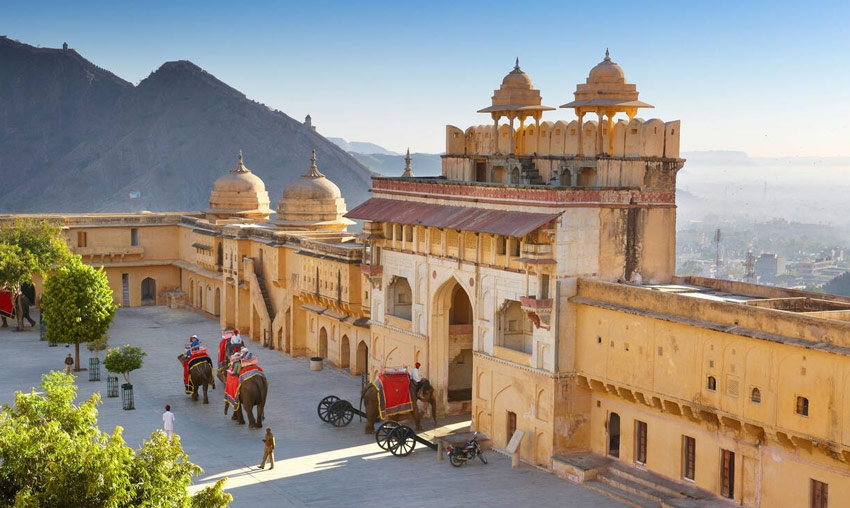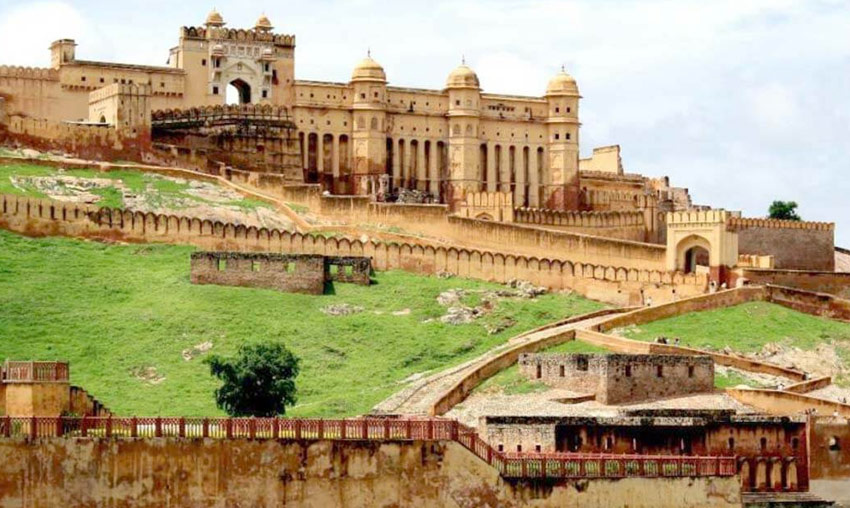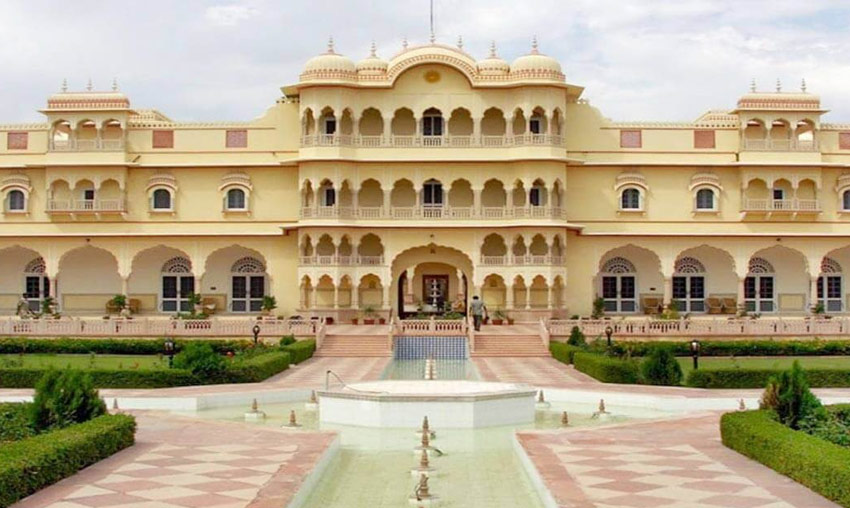Amber / Amer Fort Jaipur, India (Entry Fee, Timings, History, Built By, Images & Location)
Jaipur, the capital of Rajasthan, is the epicentre of countless tales of bravery, valour, and Rajputana honour. A walk through Jaipur’s streets reveals a different side of the city that one would not notice when looking at the contemporary homes and educational institutions that clearly depict the city’s centre.
The one that stands in stark contrast to all others. Maharaja Sawai Jai Singh II constructed Jaipur in 1727, and the city bears his name. The Amber Fort, one of Jaipur’s most beautiful structures and main draws, was named a UNESCO World Heritage Site in 2013 under the heading of “Hillforts of Rajasthan.”
As evidenced by the building of this magnificent fort and the surrounding city, Amber Fort is the ideal illustration of how Jaipur’s history encompasses more than just the valiant deeds of its rulers and troops; it also includes the support of science and architecture.
Jaipur, also referred to as the Pink City, was the perfect site for the Rajputana empire’s capital because it is encircled by hills on three sides. The Rajput Kachhwaha clan controlled Jaipur as part of the old kingdom. Due to their shared animosity with the Rajput Sisodia dynasty, they had formed an alliance with the Mughals.
The first planned city in India’s history was Jaipur. The city was built using traditional Rajputana architectural design thanks to the patronage of Maharaja Sawai Jai Singh. The chief architect from Bengal, Vidyadhar Bhattacharya, was in charge of making sure that the city’s design adhered to Shilpa Shastra, which was also the case while Amber Fort was being built. Sandstone, which is abundant throughout the state, was used to construct the main structures.
About Amber Fort
Amber Fort, also known as Amer Fort, is situated on the NH-8 around eleven miles north of Jaipur. The Aravalli ranges created the Kalikho hills, where the fort was built. The fort was strategically positioned between the Maotha and Sagar lakes and the Aravalli hills. Many locations along NH-8 offer a stunning view of the fort, which is mirrored in the Maotha Lake at the same time.
The Kachhwaha lords built the fort in the sixteenth century, but only after demolishing the earlier Meena clan-built buildings. Diwan-e-Am, Diwan-e-Khas, Ganesh Pol, Jaleb Chowk, Singh Pol, Jai Mandir, Yash Mandir, Suhag Mandir, Sheesh Mahal, Sila Devi Temple, Bhool Bhulaiya, and Zanana Dyodhi are the main attractions in the fort.
History of Amber Fort Jaipur
It was in 1558 when Raja Bharmal and Raja Man Singh I started building the Amer fort. After the persistent efforts of three monarchs, the fort was finished over the course of two centuries, with Raja Sawai Jai Singh II finishing it in 1727. Instead of the more traditional Jaigarh Fort, Amer Fort was chosen as the royal family’s new home.
However, because they share a tunnel, the Amer and Jaigarh forts are frequently regarded as one continuous structure. In times of conflict, the royal family and their entourage would retire to the Jaigarh fort. The Kadimi Mahal, or “old palace,” was another name for the Jaigarh fort.
The Meena clan’s capital, Amber, was formerly known as Dhundar. In the 1600s, the Kachhwaha kings took it from the Meenas and started building the Amer fort. The name “Amber” has so far been given several etymologies.
According to several legends, it was named from Lord Shiva’s title, Ambikeshwar, whose symbolic linga was positioned in a lake in the middle of the Amber. The 16th and 17th century Jain inscriptions discuss how the name was derived from the name of the Goddess Ambavati. According to another story, the name came from the universal mother, Amba.
Dhola Rae, the adopted nephew of Raja Alan Singh, the then-ruler of Amber, is said to have massacred the Meena clan on the day of Diwali, despite the fact that there is no inscription confirming that the Kachwaha and Meenas fought a war during which the settlement came under Kachhwaha rule.
It is thought that Kush, Lord Ram’s second son, is the ancestor of the Kachhwaha tribe. Raja Nal, one of his ancestors, lost his son, Raja Sora Singh, in battle. A Brahmin discovered his widow picking wild berries and, after observing the infant, foresaw a promising future. After that, she sought safety in Raja Alan Singh’s realm of Khogong, which is today known as Amber.
Dhola Rae, the child, was adopted as his nephew, and she was adopted as his sister. Dhola Rae was sent to Delhi to study politics when he was fourteen years old. He returned with his own army of Kachhwahas to seize Amber’s crown. The Kachhwaha kings took control of the Amber settlement when the Meenas were forced to put their weapons aside in accordance with a ceremony known as Pitra Tarpan.
Tourism at Amer Fort
One of Jaipur’s top tourist destinations right now is Amber Fort. The day excursion and the night tour are also available. The night trip has its own brilliance, but the day tour’s grandeur is best appreciated during the elephant rides that begin at the base of the hill and go all the way up to the fort.
With the help of the moonlight, the yellow lights save Amber Fort as the daylight fades. The glitz of night trips is captivating and unmatched, despite the fact that they cost more than day tours. At night, a palace that appears deserted during the day inevitably returns to its former splendour.
A guide can accompany the visits, showing them every inch of the palace and providing background information on the fort’s history, including specifics on the wall carvings and engravings. Either drive to the base of the hill and stroll to the fort, or take in the regal opulence by riding an elephant up to the fort.
Sound & Light Show at Amber Fort
Attending the light and sound show during the night excursions is another fascinating pastime. You leave the fort behind and are seated in an area that is appropriately set back from it to provide you with a full view of it.
The local mythology, stories, and myths are featured in the light and music display, which gradually builds to the fort’s actual history. It reads the sagas of the fought wars and the chronicles of the rulers. Take in the splendour of the Rajputana and their regal lifestyles.
Amber Fort Jaipur Entry Fee
- 25 per person for Indians
- 10 per person for Indian Students
- 550 per person for Foreign Tourists
- 100 per person for Foreign Students
- 200 per person for Light Show in English
- 100 per person for Light Show in Hindi
- 1100 per couple for Elephant Ride


